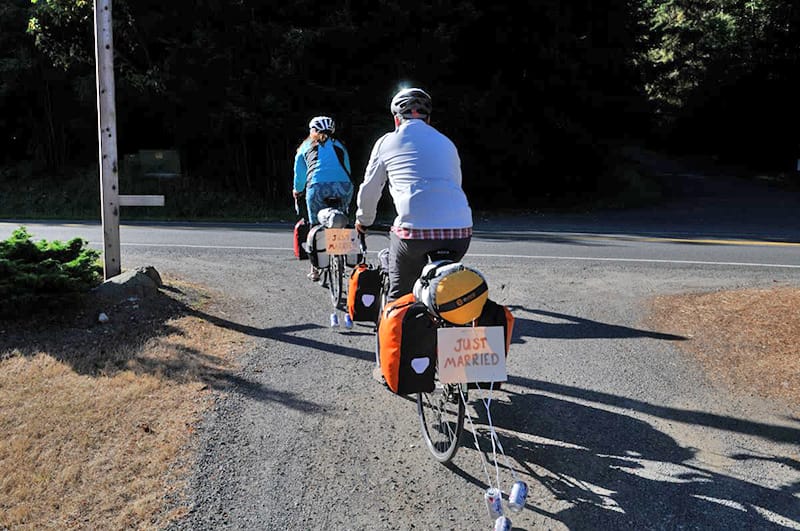Bike maintenance classes
For kids: Bike Clark County’s website.
For all ages: Offered at Gracie’s Wrench, 5050 N.E. Simpson St., Portland.
Contact: 503-839-1880 or visit its website.
Cycling maps including the Great Divide Mountain Bike Route
Adventure Cycling’s website.
Cycle Oregon’s website.
Vilhauer, 48, counts that August 2013 honeymoon trip as his favorite bike tour. Toward the end of their honeymoon, the Vilhauers traveled to Salt Spring Island and camped at Ruckle Provincial Park, where all campers gathered around a communal fire pit at night. They met campers from Korea, Australia and Germany.
“It had a real international feel to it,” said the lapidary artist who also works at Camas Bike and Sport. “Sharing travel stories and s’mores. People wandering the world and having fun.”
The Vilhauers are among a hardy breed of Clark County cyclists who go far beyond commuting by bike or taking long rides on weekends. They plan cycling vacations. They cycle over mountains, through deserts and every landscape in between. They cycle in scorching triple-digit temperatures and in drenching rain. They have become experts at repairing flat tires and bike chains on dark, rainy nights.
The sore muscles and hours in the bike saddle have a big payoff.
“The allure for me is the slower pace,” said Eric Giacchino, founder of Bike Clark County. “When you consider doing tours on a bicycle, you immerse yourself in the place where you’re touring. You strike up conversations with people you wouldn’t meet in a car.”




